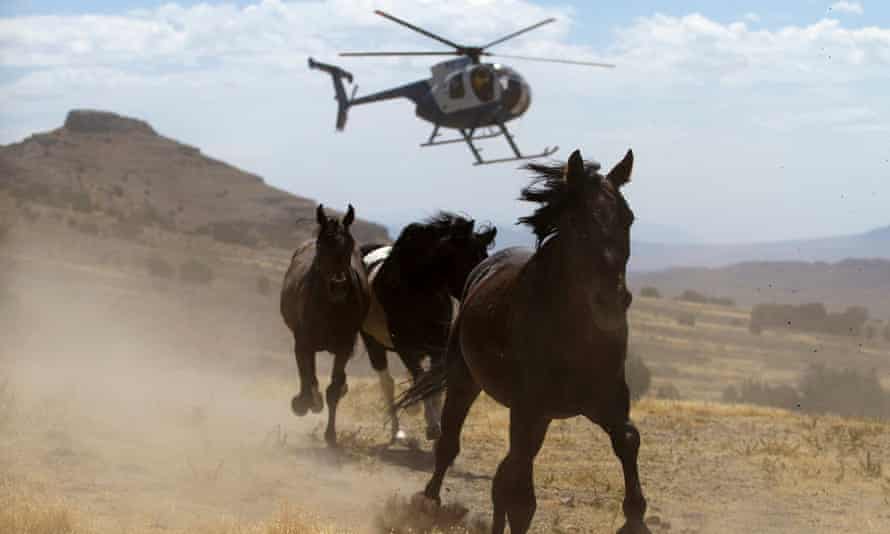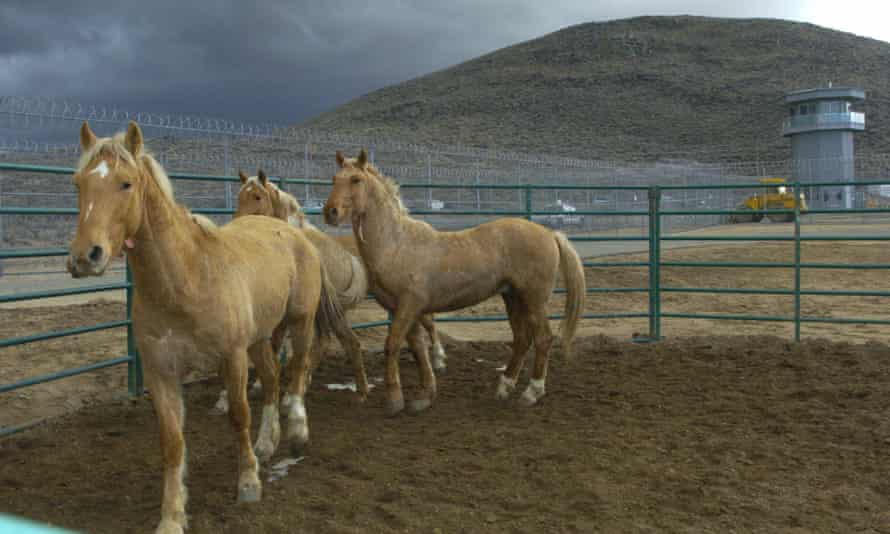Can You Eat Horse Meat in the Us
I due north 2013, in the wake of the horsemeat scandal that gripped Europe, a number of envelope-pushing, high-terminate restaurants decided to attempt to innovate horsemeat to the modern American palate. The outcome was disastrous.
Philadelphia chef Peter McAndrews, owner of upscale Italian restaurant Monsu, was sent graphic images of horses beingness slaughtered and even received bomb threats after he appear he would serve horsemeat in his dining room. He publicly declared that the intimidation tactics from horse advocates that had convinced other restaurants not to serve horse would non change his menu. Merely a visit from the FDA to all five of his restaurants did. The agency's inspectors advised that he "stay abroad from it," he told Eater Philadelphia. "I felt similar I had the FBI of the food world on me."
If yous're similar the majority of US citizens, yous would likely balk – perchance even gag – at the thought of eating horsemeat at a restaurant. Horses are considered a delicacy in countries around the world, from Italy to Communist china to Iceland, merely Americans simply tin't seem to stomach the thought, even though many areas of abundant public lands are currently overrun with about fifty,000 feral horses – and bringing them to the dinner tabular array might exist one of the best possible solutions to the overcrowding.
At nowadays, there are fifty,000 wild horses across the country, 22,000 more than the maximum limit set by the Bureau of Land Management (BLM), which must by constabulary safeguard the species. (The Wild Horse and Burro Human activity of 1971, signed past Richard Nixon, requires the BLM to protect the feral equus caballus population in perpetuity.)
Horses, introduced to North America in the 16th century, have no natural predators, and the 1971 law succeeded in reviving wild horse populations to the point that the BLM is now facing considerable legal and local pressure level to go along them from running rampant beyond western rangeland, destroying habitat and sucking the state dry of h2o and forage.
In addition to the 50,000 wild equines across x states – from Texas to Wyoming – some other 50,000 head are currently being kept in holding facilities.
Many of these horses were rounded up by helicopter over the past decade in a frantic attempt to protect rangeland habitats for other wild animals, similar the endangered sage grouse. The original act allowed horses to be euthanized in cases of overpopulation, and where adoptive owners could non be found. But in subsequent years, Congress fastened riders to the BLM direction budget prohibiting the agency from euthanizing whatsoever healthy wild horses, even in the example of overpopulation.
"People love horses," says Robert Garrott of Montana Country University, who assisted in a two-year written report by the National Research Quango that criticized current wild equus caballus management techniques. "They tin can be sane about the management of other companion animals like dogs and cats. But somehow horses are beyond reason – more than any other animal I tin recall of."
Non your grandfather's American mustang
Garrott says the current scenario is likely not what legislators and horse advocates had in mind when the police force was passed in 1971. "In the 70s, scientists idea wild horse populations grew at 1% to 3% annually," says Garrot, who assisted with research in the 80s that determined that wild horse populations actually grew at about 10 times that charge per unit.
Unable to choose the animals, and with interest in adopting wild horses also low to keep upward, the BLM rounds up thousands of horses every yr and places them wherever they tin. Gus Warr, lead wild horse and burro specialist for Utah, says declining interest in adoption has made housing these horses complicated, expensive and less than ideal for the animals. "Sometimes in these brusque-term facilities, these animals are beingness held for years because of the state of affairs we're in. It's just a feed lot."
But even feed lots are expensive. Facing a population that doubles every four years, Congress increased the upkeep to $80m last twelvemonth for the wild horse and burro program solitary, upwards from $17m in 1990.

This past summertime, the Utah BLM faced the closure of two of its partnerships with wild horse conservation programs. The bureau was tasked with moving thousands of horses from private land in a matter of days. The cost of moving those horses ran into the "hundreds of thousands of dollars", co-ordinate to Warr.
"The BLM are between a stone and a difficult spot," Garrott says.
The wild equus caballus and burro program bears no resemblance to the manner the government handles other charismatic megafauna, some of which people hunt for sport, similar wolves, or kill for meat, like bison.
"Not even other species that people are passionate most – wolves in the west – are protected this way," Garrott says. "Horses are the only species that I know of that society hasn't embraced the idea that if at that place are excess and no ane wants those animals that they are put downwards."
The upshot of wild horses on their habitat has been compared to that of invasive pythons or feral pigs, both of which land agencies take attempted to control through bounty hunts.
But Garrott thinks it very unlikely that Americans would advocate for similar treatment of horses. "Here in North America, the culture of hunting horses just isn't there. And certainly no culture of eating them."
The US Humane Society is highly critical of the BLM's management strategy, calling the helicopter-aided roundups cruel and dangerous. They advocate for more aggressive attempts at using contraception to control the population, which the BLM and National Research Council says is insufficient, considering that the population is already 50% college than wild animals agencies consider acceptable.
The Humane Guild is also a strong opponent of any type of equus caballus slaughter. It lobbies for Congress's connected pressure on the BLM to avoid horse euthanasia and slaughter.
"We see them differently because they are an animal on which the West was congenital and they are an iconic species," says Stephanie Boyles Griffin, senior director for the Humane Social club's Wildlife Protection Plan. "They represent the rugged individualism that is symbolic of the west. People want them to be free."

Ah, horses – we ate them once
So why not swallow them? It'southward what we do with other wild ungulates such equally deer, elk and bison. Plus, horsemeat is healthier than beefiness: it'due south lower in fat, higher in poly peptide and has a greater proportion of omega-iii fatty acids. Connoisseurs describe it as sugariness and pleasantly gamey.
Equus caballus consumption wasn't always so taboo. It was a Paleolithic staple. Effectually the second world war, horse cuts briefly came back into mode, largely due to the meat'southward depression cost.
Later the European horsemeat scandal in 2013, information technology became somewhat de rigueur in England to deliberately eat horsemeat. Princess Anne suggested that horse owners might take meliorate care of their animals if they thought they could ultimately sell them for meat. (That argument was not well-received.) Some of the almost expensive restaurants added horse dishes to their menus.
The motion extended to the U.s.a. in 2013. With congressional obstacles to horse slaughter lifted, a few plants were on the verge of coming dorsum into operation.
Simply the backlash from horse conservation groups and government officials was swift. Congress pulled funding for meat inspectors in last twelvemonth'due south budget, effectively reinstating a ban on horse slaughter in the United States. Because of the lack of domestic abattoirs, most 160,000 domestic American horses are shipped to slaughterhouses in Canada and Mexico for sale in foreign markets every year.
Objections to eating horsemeat that don't involve the horse's vaunted position in American iconography often betoken to the potentially unsavory quality of meat from working horses. Final month, the European Quango rejected horsemeat from Mexican slaughterhouses, citing concerns that drugs used in American racehorses might taint the food chain.
If wild horses were the source of horsemeat, might that assuage concerns?
Dan Barber, author of The Third Plate: Field Notes on the Hereafter of Food and co-owner of the farm-to-tabular array eatery Bluish Hill at Stone Barns in New York's Westchester County and its sister Blue Loma in New York City, says wild horses could accept a place on the American menu.
"If y'all look at it just from an ecological standpoint – and for me, a gastronomic standpoint – I run into a real logic in including horsemeat on a carte du jour," Barber said in an e-mail. "For whatsoever animal – or crop, for that thing – we have to inquire: what is its value in our environment, and our agronomics, and how tin we maximize that value through culinary technique?
"The correct culture of eating can actually improve a mural. And something like wild horsemeat is a good example (as long as you can ensure honest labeling and humane handling). For me, 35 miles from New York Metropolis, it doesn't really apply. But for someone cooking on or almost rangeland? Admittedly."
But, he admitted that his "eye wasn't really in information technology".
That seems to be the primary obstruction for those who would like to run across more rigorous mustang direction. It would require an ambition (and a market place) to modify legislation effectually wild horse populations – and potentially their prototype in the American listen.
With politicians strongly motivated to exercise nothing, Garrott says, the American due west is in danger of facing the same degree of drought and starvation that has afflicted Australia's wild horse population in recent years, which has led to orders to shoot over 10,000 animals to salve them from suffering. He fears that American wild horses will exist allowed to run gratuitous until they sew together confronting the reality of limited resources. "Information technology'southward totally and completely unsustainable," says Garrott. "And if society wants to do that, so exist it. Information technology will exist a very pitiful day for horses and those who enjoy our western rangelands."
- This commodity was amended on 4 February 2015. Due to a production fault, the story originally included a supporting photo of wild horses in Sabucedo, Kingdom of spain. It has been removed.
Source: https://www.theguardian.com/environment/2015/jan/09/eating-wild-horsemeat-america
0 Response to "Can You Eat Horse Meat in the Us"
Post a Comment